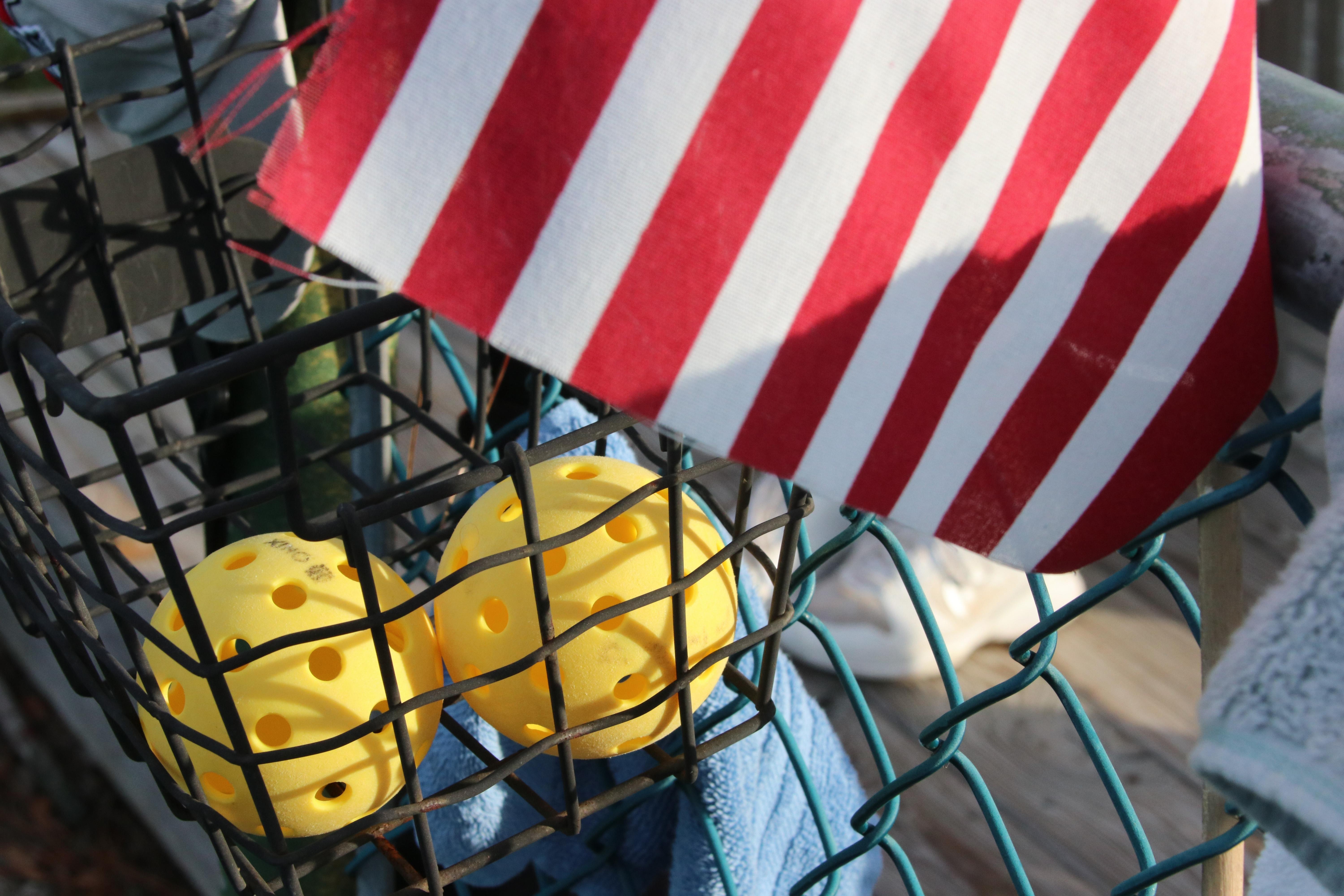
Tennis looking at new ways to serve its baseline audience
Like its old counterparts — golf and bowling — tennis is dealing with a modern recreational pie divided in many ways.
Options abound for the casual hobbyist or serious-minded, on land or water, indoors or out, semi-passive or highly active. A walk through a modern sporting goods store highlights the many and varied options.
Also like golf and bowling, tennis is looking for ways to ensure a future flow of players as its core constituency grows older.
But unlike golf and bowling, tennis is facing the troubling fact that we’re an increasingly inactive society.
Sure, golf and bowling require certain skill sets and some physical abilities, but nothing like the back-and-forth and side-to-side demands of tennis — even friendly tennis.
Like participants in many other sporting activities, often for physical reasons, some tennis players are looking for less taxing competitive outlets. And finding them.
One in particular.
The Numbers Game
If you’ve been around the local tennis scene for any amount of time the past two-plus decades, you likely know Tom Kelly. He’s been a local tennis pro since 1993, first at City Island and since 2002 at Daytona Beach’s Florida Tennis Center on LPGA Boulevard.
He remains very bullish on tennis.
“I can only speak for the Tennis Center,” he begins, noting how his memberships have grown from 69 to nearly 250 over the past decade. How, on some nights, his 24 clay courts are booked with league play and informal round-robins, mostly including the middle-aged and above.
There’s a robust junior program with over 100 kids, some of whom transition into competitive tennis through high school and maybe even college. It’s what happens just after that, however, that has people in Kelly’s business searching for answers.
“The drop-off is after college,” Kelly says. “People tend to focus on their career, and we don’t see them for a while. That’s the trick, to get them back playing.”
It used to be a matter of opening the gates, popping a new can of balls, and organizing a tournament. But the drop in tennis “league play” resembles the ongoing slump in “league bowling.”
A decade ago, the Greater Volusia Tennis League had 1,183 players. Last season, it had 757.
“I ask people why they don’t play GVTL anymore, and they tell me it’s too much of a commitment,” says Kelly.
The season runs from September through April and includes teams from all over Volusia and Flagler Counties. That, too, is sometimes an issue.
“What we’ve seen, mostly, is people don’t want to drive somewhere else to play,” says Brandon Washington, who works out of the Palm Coast Tennis Center as a recreation supervisor for the city.
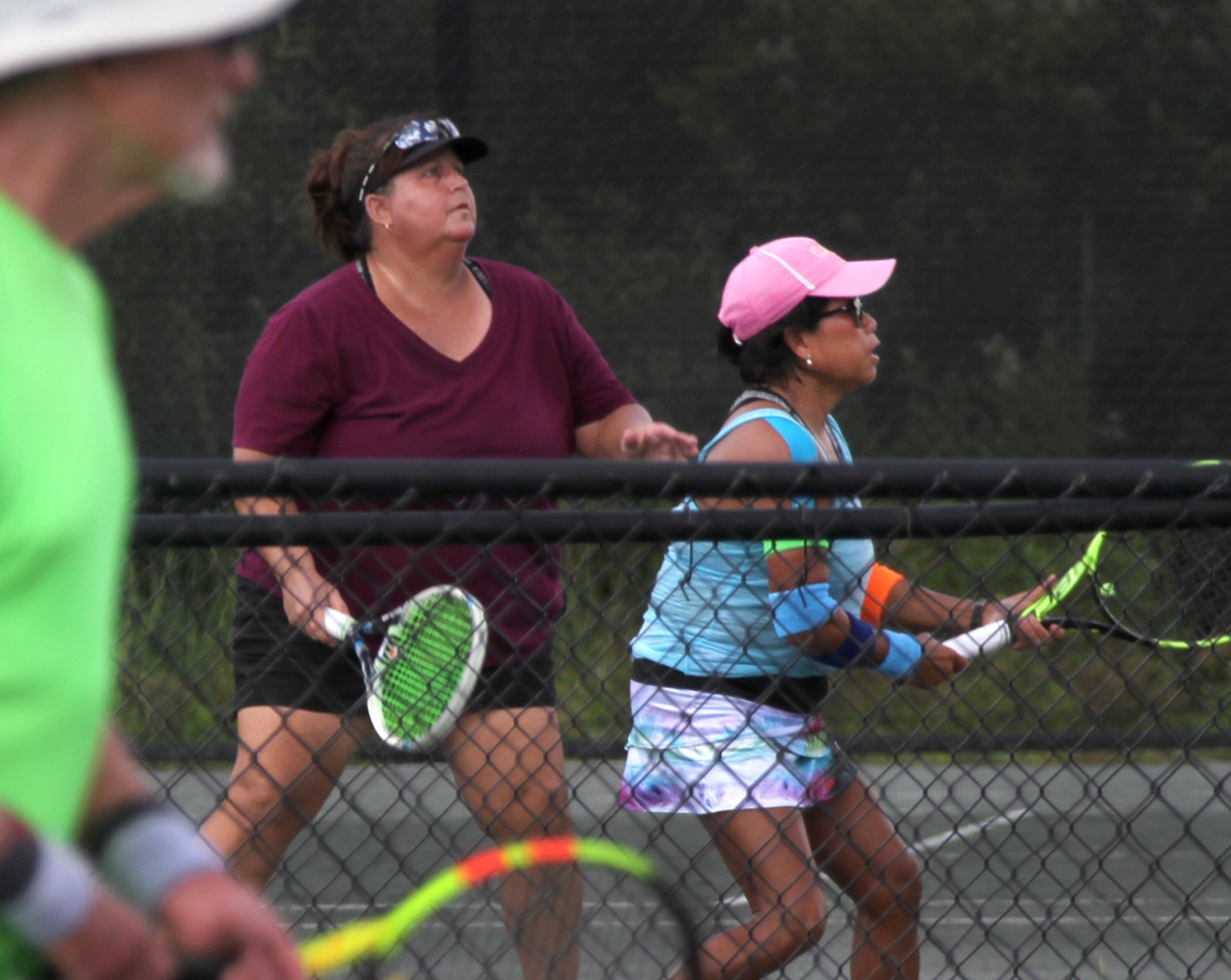
New Ways to Play
The tennis industry, both nationally and locally, is responding with big-picture and small-picture initiatives in an effort to keep the game relevant and, hopefully, get it back into a growth pattern.
On the national front, the U.S. Tennis Association’s Kurt Kamperman is among those leading the effort.
“We’re promoting a variety of social tennis programs and leagues like ‘Sets in the City’ and ‘Sip and Serve,’ as well as fitness-oriented programs like Cardio Tennis,” says Kamperman, chief executive of the USTA’s national campus in Orlando. “We still run our existing USTA leagues and tournaments, but many millennials want a more social environment with less of a time commitment.”
Locally, the effort falls to tennis professionals like Michael Arrigo at the Palm Coast Tennis Center, a municipal facility where the challenges are different than they were at the private Jacksonville club Arrigo left last fall.
In Palm Coast, the 27-year-old pro can look out at the 10 clay courts on most weekday mornings and see plenty of middle-aged and retirement-aged players. His goal is to look out there on weeknights and weekends and see more of his age-related peers. But how?
“Changing the format, you know,” Arrigo suggests. “Shortening the format. Changing the leagues. Going from traditional USTA leagues ... There are more social leagues now, such as ‘beer and tennis’ on a Friday night. Orlando has had some success with millennials and we think we can too.”
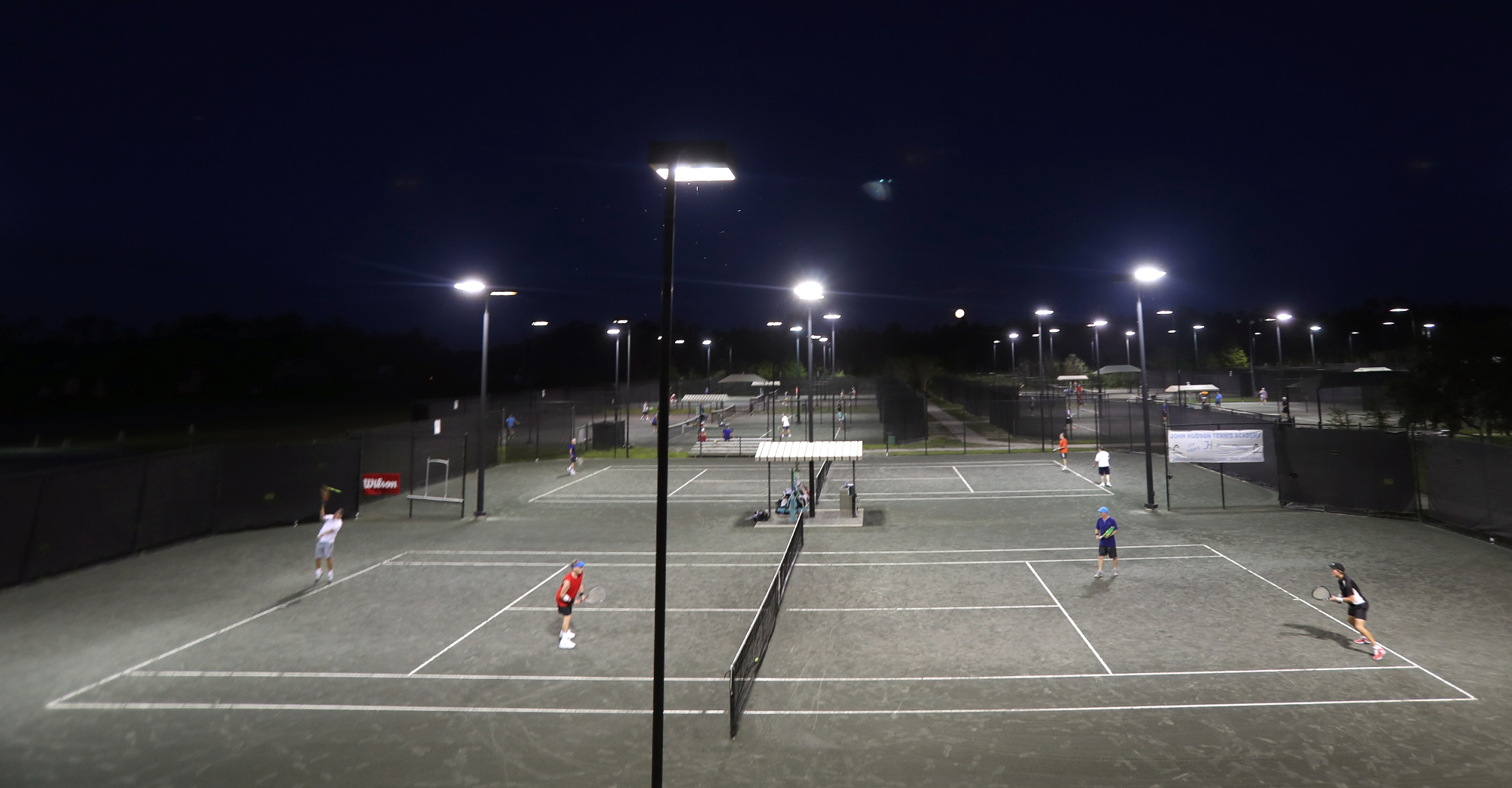
Seeking 20-Somethings
Nationally, according to a report by the Tennis Industry Association, the sport lost 2.2 percent of its players from 2016 to 2017, putting the number at 17.68 million. “Core” players, who make up 93 percent of all players, dropped 3.5 percent to 9.52 million.
To get more young adults playing, it helps to have a base from which to draw. The current national efforts include two USTA initiatives. For the younger kids, there’s Net Generation, designed to teach coaches and organizers how to engage and hold players at the grade-school level. The organizational philosophy: “Kids who play tennis will be healthier, happier and have a game they can play for life.”
For the older kids, there’s the USTA’s “Tennis on Campus” program on college campuses across the country — the goal is to promote and organize intramural leagues and social play.
Just beyond that, however, there’s a generational lull, for a variety of reasons.
“Unfortunately, I don’t play recreationally,” says Spruce Creek High girls tennis coach Bailey Palmer, who played competitively as a junior, in high school and through four years of college. Now, “Mostly, I only play tennis during my girls’ practice.”
“After college, most of my former teammates don’t play tennis anymore, myself included,” she said. “I used to play every day, so my strokes were smooth and confident going into a match. Now, I don’t have time to play every single day for a few hours. So, when I do go out and play, I get very frustrated because my strokes are tight and awkward.
“I still love the game with all my heart; that’s why I am coaching it. It’s just not the same playing it anymore.”
For others in or around their mid-20s, like Palmer, the problem is logistical. Unlike golf and bowling, you can’t play tennis alone. According to the Tennis Industry Association study, a whopping 13.7 million Americans consider themselves tennis players but haven’t played in the past two years, and the No. 1 reason for that: “Not having anyone to play with.”
“The biggest barriers for that untapped millennial market, especially players who hang up their racquets in college, is mostly access,” says Arrigo. “They don’t have a peer group they’re looking to play with. There have been some apps to connect people looking for tennis partners. But until one takes off and gets everybody on board ...”
Locally, if there’s no magic formula to get the game back on an upward trajectory, there’s always the old “strength in numbers” hope.
On LPGA Boulevard, Kelly literally sees the Florida Tennis Center becoming surrounded. And that’s a good thing for business, he hopes.
“This tennis center was built on the edge of town,” he says. “At the time, the thinking was, the town would catch up. Then we had the housing bust in 2008.”
Boom times have returned, however, with thousands of homes planned for off of LPGA Boulevard.
“We’re working with them,” Kelly says. “We’ve talked to them about using the tennis center to attract home buyers. We’re excited about it.”
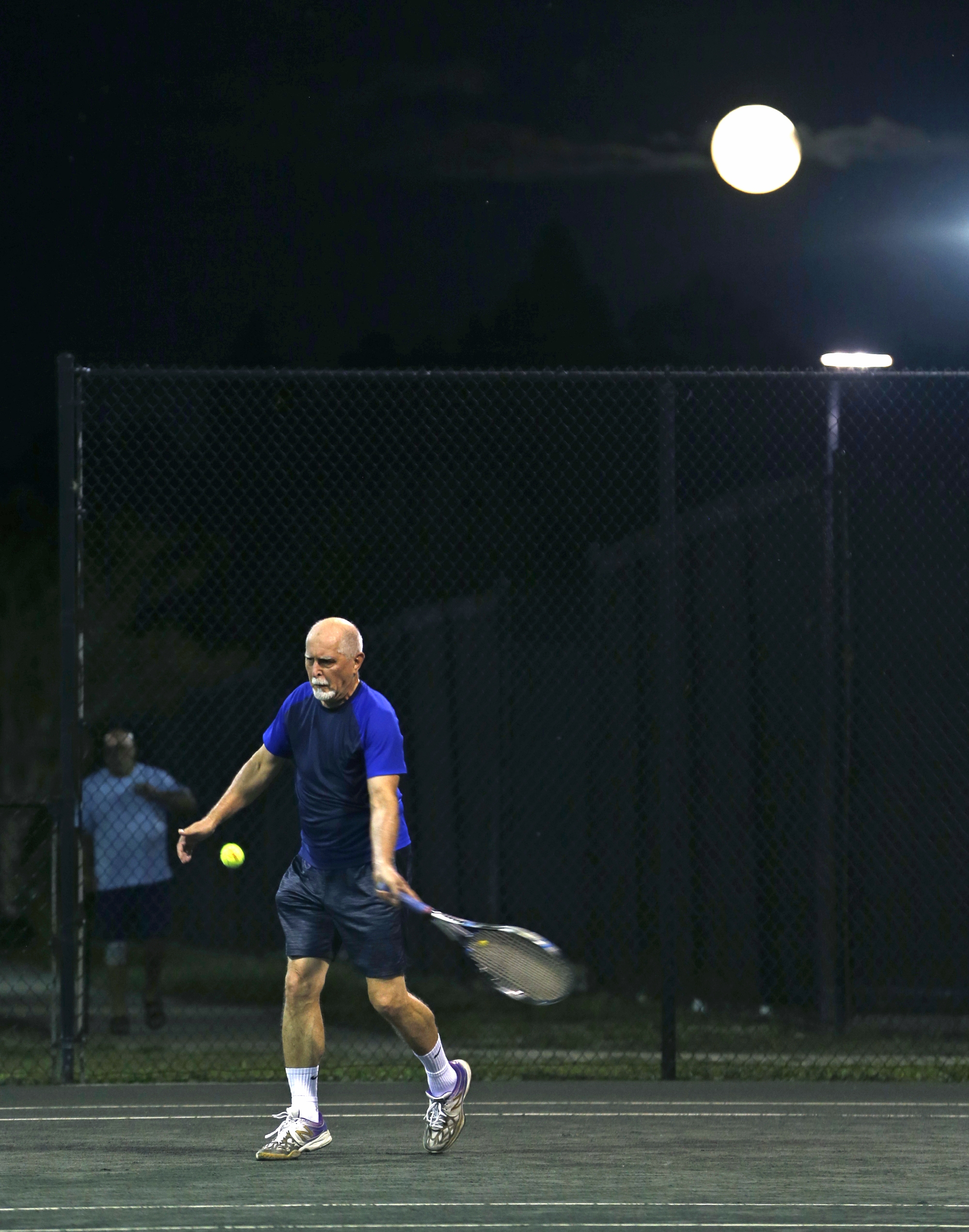
The New Sensation
Tennis, like many other recreational endeavors, is working to restock its pipeline of players and keep a healthy flow going into the future. But while doing that, it also now finds itself guarding its distant flank and working to keep its graying veterans from moving into lower-stress endeavors — particularly a formidable foe with the cute name: Pickleball.
You look for easy ways to describe pickleball, and you eventually stumble upon one of the most creative.
“It’s as if tennis and ping pong had a baby.”
To mix in another racquet sport, pickleball is played on a badminton-sized court, but with a tennis-style net.
“It’s the new phenomenon, you know,” says Owen Davidson. “It’s so much different than any other sport I know. It’s more social, it’s less expensive, more fun, shorter, and it’s still a good conditioning thing — you can work up a good sweat.”
And that’s coming from a tennis lifer. Owen and Joan Davidson are both in their 70s now and remain fixtures in the local tennis community. They’ve played, coached, taught and promoted their sport throughout the 50 years they’ve lived here.
The vacant lot next to the Davidsons’ longtime home in New Smyrna Beach, just off the North Causeway, has long housed a fenced-in tennis court belonging to the Venezia community. Joan Davidson would use the court to give tennis lessons, and there was some other play on the court at times, but mostly it sat empty.

About four years ago, the community adjusted and turned the one tennis court into four pickleball courts. Two mornings a week, Owen Davidson still goes across town to play tennis at the Racquet Tennis Club off Highway 44. Three other days, he and Joan walk through their side yard and play pickleball with a consistent group of players.
“Those courts are used 99-percent more than the tennis court was ever used,” Owen says.
“I think it’s maybe taking the place of racquetball,” Joan Davidson says of pickleball. “It’s so much easier to learn. There’s a lot less skill involved, a lot less technique. With tennis, it might take you a couple of years to become proficient. This sport, you can get it in an hour or two.”
You don’t need an old tennis court to play pickleball. You also don’t need to be outside. A few miles away from Davidson’s neighborhood court, Reggie Beverly oversees and often takes part in daily pickleball inside the Babe James gymnasium, where a pair of portable nets and some blue tape serve as two pickleball courts on the basketball floor.
“The courts have been very popular since we put them in,” says Beverly, program director for New Smyrna Beach’s leisure services division. “We get people who don’t play tennis anymore, and we get people who simply want to be inside during the heat or rain. Once they play, they’re usually hooked.”
According to the Sports & Fitness Industry Association, pickleball participation grew to nearly 3 million players in 2017, a 12.3 percent increase from the previous year. SFIA’s survey showed that 75 percent of the “core” players, those who play at least eight times a year, are 55 and older.
Those numbers, according to industry insiders and all anecdotal evidence, are growing.
“It seems geared more to older people,” says Kelly. “I think it’s a good thing. They go to pickleball so they can remain active. We have some tennis players who just can’t do tennis anymore. The court is too big for them.”
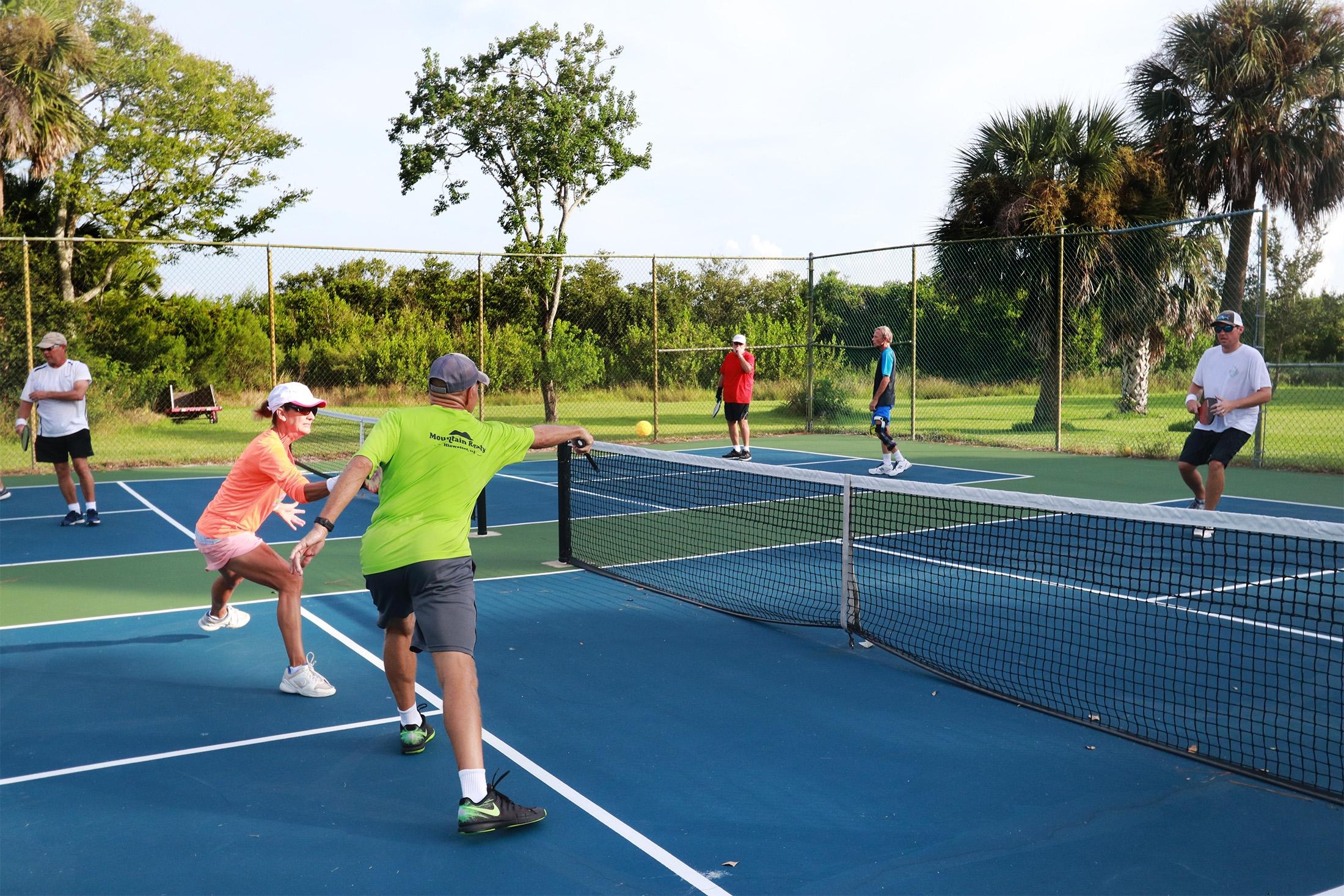
USTA Attempts to Answer
Did someone suggest the court is too big? The USTA, the game’s American overlord, seemed to ignore pickleball for many years, but has recently developed a relationship. In a recent initiative, the USTA has a pilot program helping add pickleball lines to existing tennis courts — it has the backing of the U.S. Pickleball Association.
“We can look at pickleball as a competitor or as a racquet-sport cousin,” says Kamperman.
Along with forging a loose pickleball relationship, the USTA has also heard the “smaller court” talk and taken a stab at bringing a smaller version of tennis to the masses.
It’s called POP Tennis, and Kamperman calls it a “reasonable assumption” to suggest it’s a way to possibly combat desertions to pickleball. POP Tennis, a reinvention of an old game called paddle tennis, is played on a scaled-down tennis court, with boundary lines set up a few steps inside the baselines and about one step inside the singles-court outer lines.
A lower-compression ball, a large paddle instead of a racquet, and underhand serves also differentiate it from traditional tennis, but everything else, including the scoring, is the same as tennis.
“POP Tennis keeps you in the same zip code as tennis,” says Trishna Patel, a teaching pro at Trails Racquet Club in Ormond Beach.
The USTA began the initiative two years ago and it has yet to gain a foothold locally.
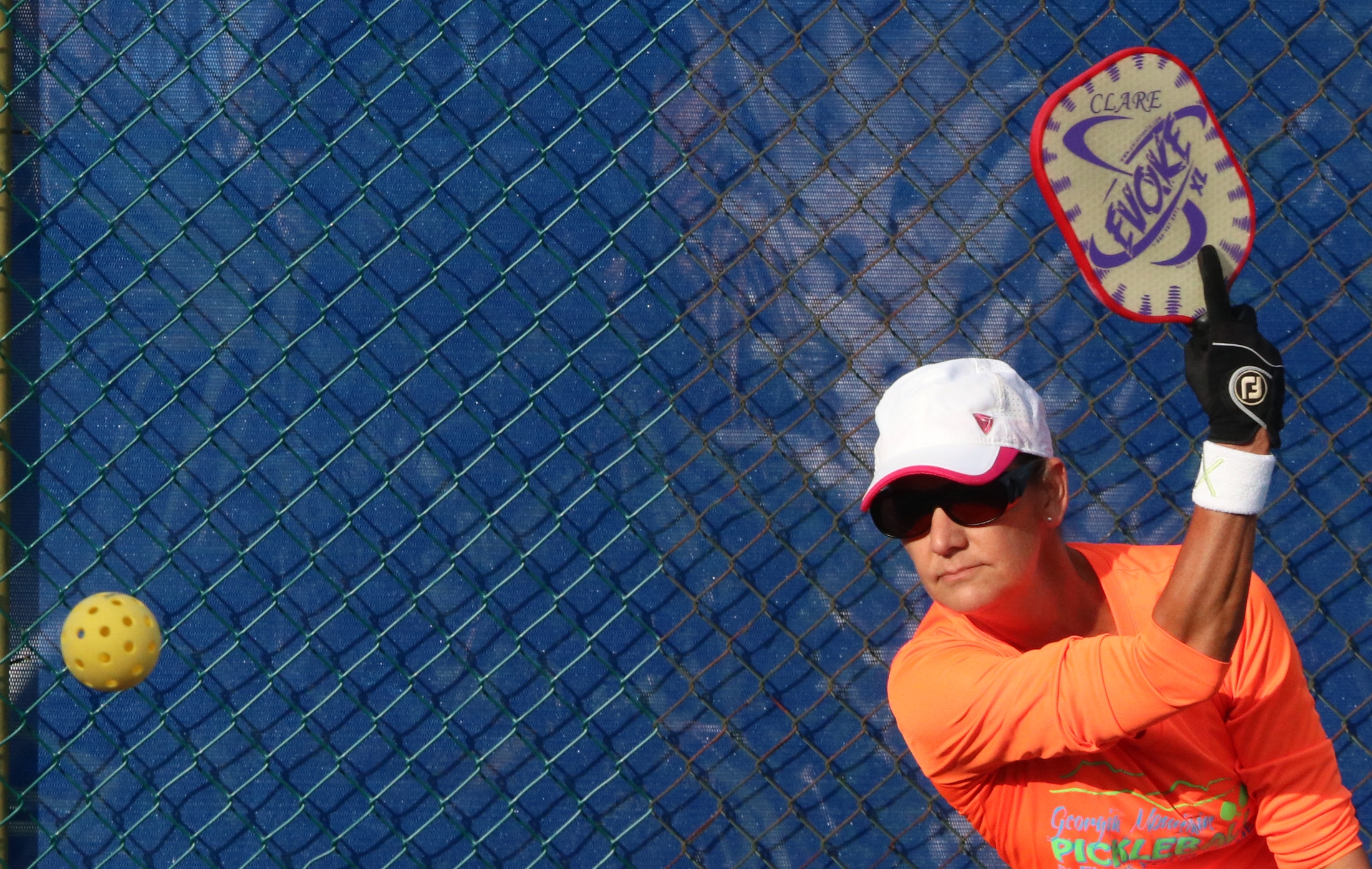
“I really like POP Tennis and think it has a lot of potential,” says Palm Coast’s Arrigo. “We haven’t offered any POP Tennis, but we’re registered with the International POP Tennis Association and I definitely foresee more of it in our future.”
Another off-shoot, geared toward younger generations, is Cardio Tennis, which incorporates tennis skills into a boot-camp-style workout.
“I think in the future tennis will become integrated with personal fitness,” says Patel, who oversees a Cardio Tennis program at the Trails. “I’ve been really noticing that the local tennis population is aging, so we’re trying to grab new entrants — adults in their 30s, 40s — maybe help them find a gym alternative, gear it as an alternative to working out. That’s the Cardio Tennis element ... playing a sport while you’re getting a workout.”
All tennis is “cardio” tennis to Ormond Beach’s Ruthie Pickett, who has played the game for nearly all of her 56 years.
“I absolutely do use tennis as big part of my cardio,” she says. “It’s amazing how much you run around on the court chasing that little yellow ball while not really thinking about logging a couple of miles. I tend to get very bored on a treadmill or rowing machine.”
Whatever it takes and whatever the reason, local tennis leaders are looking to get folks off the couch and on the court. If it takes a certain level of repurposing or reinvention, so be it.
“Some people in this industry are very threatened by change and outside stuff,” says Arrigo. “But you have to embrace it.”
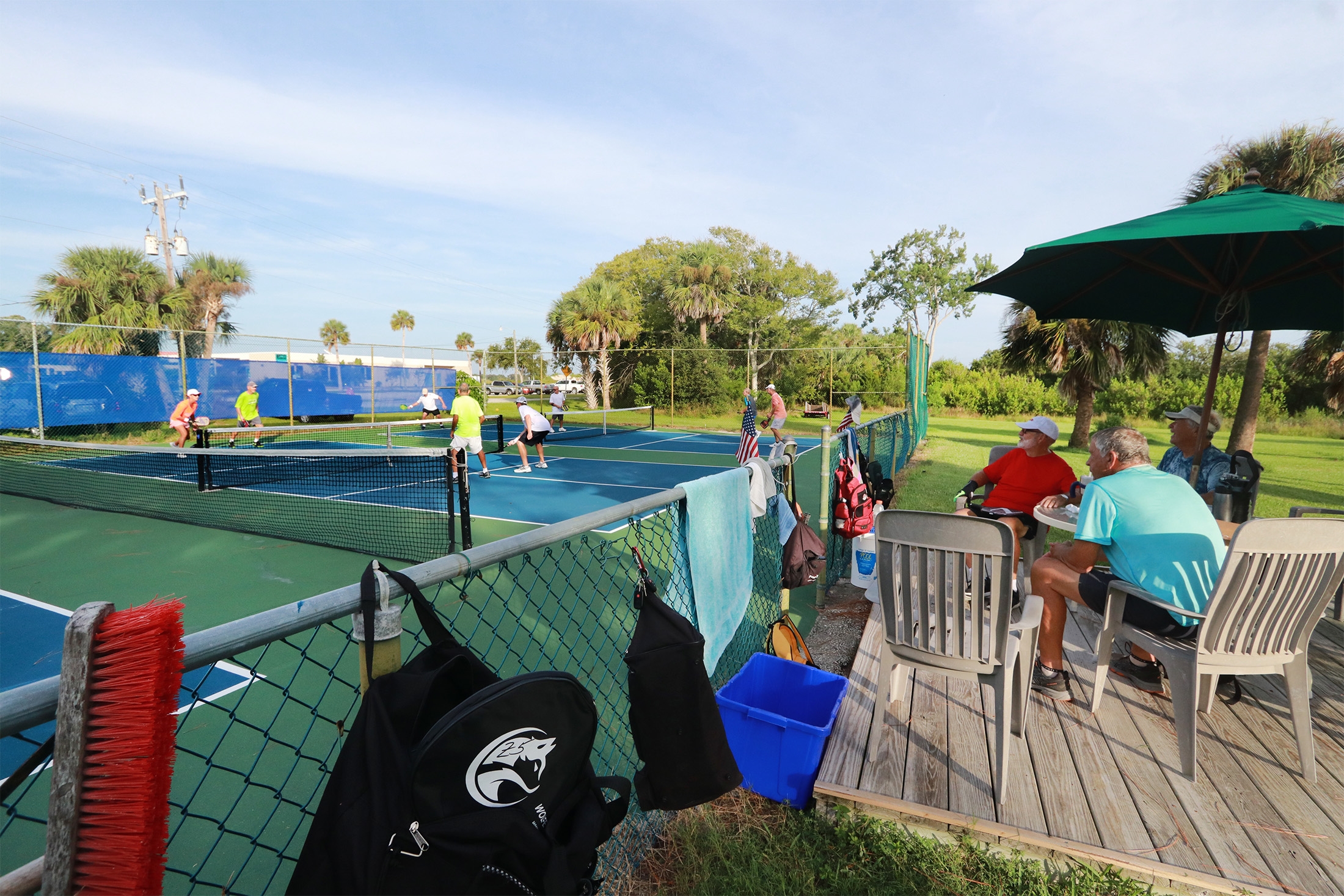
Pickleball, the backstory
Pickleball was born out of boredom and improvisation in the backyard of former U.S. Congressman Joel Pritchard — in 1965 near Seattle on Bainbridge Island.
Pritchard’s property had an old badminton court, but without badminton equipment, they used ping-pong paddles and a plastic Wiffle ball, eventually lowered the net and devised rules.
Two years later, the first “official” court was built in the backyard of a neighbor. Now, there’s a national Pickleball Association, national championships and, according to the Sports & Fitness Industry Association, about 3 million pickleball players in the U.S.
It can be played as a singles game, but mostly it’s doubles play.
Oh, the name? There’s some debate on that one. The easiest suggestion is that it was named after the Pritchard’s dog, Pickles. But Joan Pritchard, Joel’s wife, said it derived from “pickle boat,” a term associated with the sport of rowing.
The pickle-boat crew is made up of “leftover” crewmen from other boats. Pickleball was originally built with leftover pieces of other games. Joan Pritchard told her story many times over the years, insisting that the dog didn’t come around until a few years after the game was invented, and that the dog was named after the game, not the other way around.
